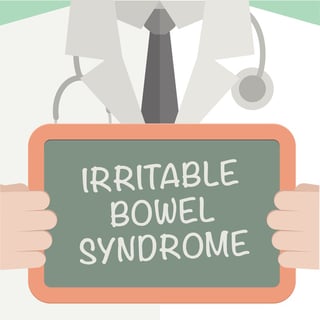 Irritable bowel syndrome is a prevalent disorder, affecting approximately 25 million – 45 million people in the United States alone. To begin treatment, a proper diagnosis of irritable bowel syndrome is important. Here, anorectal manometry as a diagnostic tool1 for irritable bowel syndrome will be discussed.
Irritable bowel syndrome is a prevalent disorder, affecting approximately 25 million – 45 million people in the United States alone. To begin treatment, a proper diagnosis of irritable bowel syndrome is important. Here, anorectal manometry as a diagnostic tool1 for irritable bowel syndrome will be discussed.
What is Irritable Bowel Syndrome?
Irritable bowel syndrome2 (IBS) describes a group of symptoms that affect a patient’s gut and intestinal comfort. There are four main types of IBS: IBS with diarrhea (IBS-D), IBS with constipation (IBS-C), IBS with both constipation and diarrhea (IBS-M), and IBS with neither of these symptoms (IBS-U). In nearly all cases of IBS, changes in bowel movements occur in conjunction with abdominal pain. Additional symptoms of IBS include:
- Discomfort
- Fecal urgency
- Incomplete evacuation
- Bloating
- Excessive gas
- Indigestion
- Nausea
- Abdominal distension
There is no cure for IBS3; however, successful treatment is dependent on a proper diagnosis. Treatments include lifestyle changes, diet, medications, and psychological therapy.
Diagnosing Irritable Bowel Syndrome: Anorectal Manometry
Until recently, IBS was diagnosed via extensive testing which was used to exclude diseases that could be causing similar symptoms. In general, absence of other disorders led to an IBS diagnosis. However, today the diagnosis of IBS requires a knowledgeable physician who can recognize symptom details when performing a physical examination and limited diagnostic testing is necessary.
One simple test that can aid the diagnosis of IBS is anorectal manometry. Here, a catheter and balloon are utilized to study the muscles and nerves in the anus and rectum. The catheter and balloon are first passed through the anus and into the rectum. Next, the balloon is inflated and pressures exerted by the surrounding muscles are recorded.
Also read: Anorectal Manometry and Hirschsprung Disease
For patients with IBS who experience diarrhea or constipation, anorectal manometry is useful for characterizing the manner in which muscles hold and pass stool. During an anorectal manometry test, the maximum voluntary squeeze pressure relative to pressure at rest will be recorded, as well as internal anal sphincter inhibitory reflex to rectal distention, rectal volume sensory thresholds, sphincter length, and defecation dynamics.
Anorectal Manometry in Irritable Bowel Syndrome: Literature
A number of scholarly studies have been performed to characterize the usefulness of anorectal manometry as a diagnostic tool for IBS.
In a study titled Anorectal Manometry: Differences Between Diarrhoea and Constipation Predominant Subjects4, anorectal manometry was performed on a total of 85 participants, including 28 with IBS-D, 27 with IBS-C, and 30 patients without IBS symptoms. For patients with IBS-D, it was found that balloon volumes required in order to simulate the sensations of gas, stool, discomfort, and urgency were significantly less than for patients with IBS-C or the control group. Additionally, patients with IBS-D had lower rectal compliances than IBS-C sufferers or control patients. When psychological parameters were compared, it was found that IBS-D sufferers had more anxiety than those with IBS-C.
Overall, this study showed that three sub-types of IBS patients can be differentiated with anorectal manometry. For instance, characteristics such as a sensitive rectum, stiff rectum, or insensitive rectum, based on the sensations experienced during anorectal manometry examination, can be used for IBS classification.
In another publication, Study of Visceral Sensitivity in Irritable Bowel Syndrome5, anorectal manometry was utilized to better understand rectal visceral perception in patients suffering from functional bowel disorders, such as IBS. Here, researchers theorized that the activation of intestinal mast cells may be implicated in IBS, since these cells have gastrointestinal mucosal sensory nerve terminals that contain neuropeptides and are connected to the central nervous system.
Of 61 study participants, 42 were diagnosed with IBS and 19 were healthy. Each participant underwent anorectal manometry tests to determine rectal perception thresholds to balloon distension. While anorectal resting, squeezing, and relaxation pressures were normal in both groups of study participants, IBS-D sufferers had lower sensation, defecation, and pain thresholds than IBS-C and control patients. Those with IBS-C also had lower pain thresholds than healthy patients.
Electron microscopy studies of tissue from the terminal ileum, ileocecal junction, and ascending colon showed a significantly elevated concentration of mast cells in patients with IBS. Ultimately, researchers concluded that altered rectal perception is characteristic of IBS, which can be reliably tested for with anorectal manometry.
Performing Anorectal Manometry
If your practice is not currently performing Anorectal Manometry testing, click on the link below to learn how to offer it without placing additional burden on your budget or your staff.
References
- Drug VL, Brădăţan B, Taraşi I, et al. [The importance of ano-rectal manometry in irritable bowel syndrome]. Rev Med Chir Soc Med Nat Iasi. 2000;104(3):43-50. Link
- Saha L. Irritable bowel syndrome: Pathogenesis, diagnosis, treatment, and evidence-based medicine. World Journal of Gastroenterology : WJG. 2014;20(22):6759-6773. doi:10.3748/wjg.v20.i22.6759. Link
- Lacy BE, Weiser K, De Lee R. The Treatment of Irritable Bowel Syndrome. Therapeutic Advances in Gastroenterology. 2009;2(4):221-238. doi:10.1177/1756283X09104794. Link
- Prior A, Maxton DG, Whorwell PJ. Anorectal manometry in irritable bowel syndrome: differences between diarrhoea and constipation predominant subjects. Gut. 1990;31(4):458-62. Link
- Dong WZ, Zou DW, Li ZS, et al. Study of visceral hypersensitivity in irritable bowel syndrome. Chin J Dig Dis. 2004;5(3):103-9. Link


